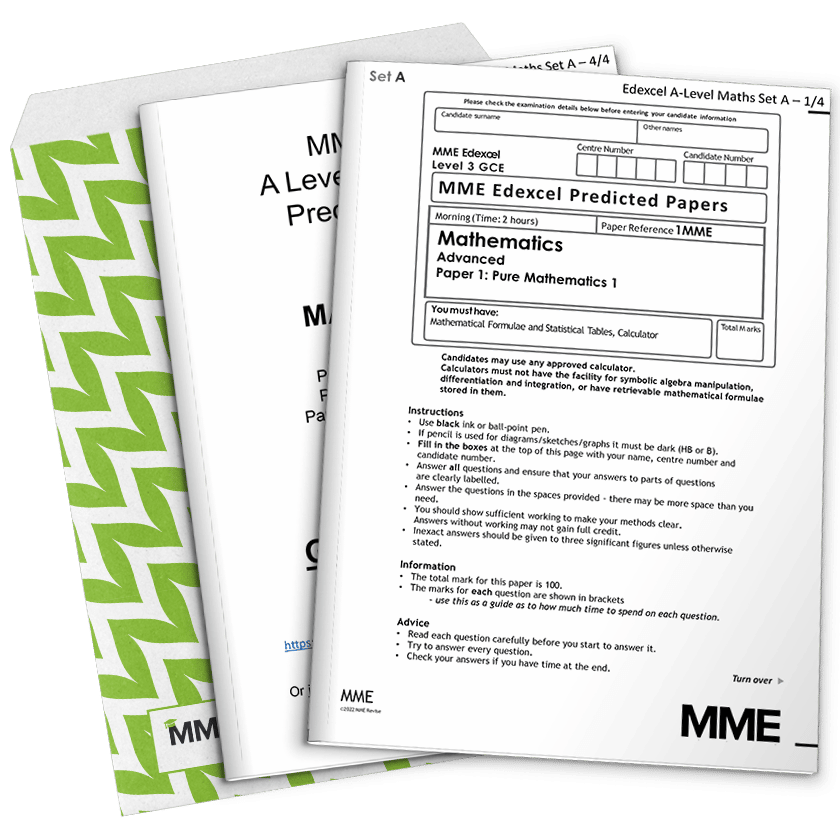Differentiating Parametric Equations
Differentiating Parametric Equations Revision
Differentiating Parametric Equations
Recall: Parametric equations are equations that are written as x=f(t), y=g(t), rather than y=f(x).
On the face of it, differentiating them might seem difficult. However, it is made easier by again treating \dfrac{dy}{dx} as a regular fraction.
Differentiating Parametric Equations is Simple
Recall: The chain rule:
\dfrac{dy}{dx}=\dfrac{dy}{dt}\dfrac{dt}{dx}
By flipping the last fraction:
\dfrac{dy}{dx}=\dfrac{dy}{dt}\div\dfrac{dx}{dt}
So all we need to do is differentiate x and y with respect to t.
Example: A parametric equation is y=t^{2}, x=3t+6. Find \dfrac{dy}{dx} in terms of t.
\dfrac{dy}{dt}=2t
\dfrac{dx}{dt}=3
\begin{aligned}\dfrac{dy}{dx}&=2t\div3\\[1.2em]&=\dfrac{2t}{3}\end{aligned}
Tangents and Normals of Parametric Equations
You could be asked to find the gradient of the tangent or the normal of a parametric equation. The gradient of the tangent is just \dfrac{dy}{dx}, while the gradient of the normal is -1 divided by \dfrac{dy}{dx}. You will need to evaluate these gradients for specific values of t, that will either be given to you in the question or that you will be required to work out from a given x or y value.
Example: Find the gradient of the tangent to x=t^{2}, y=t^{2}+6t-7, at t=12.
\dfrac{dy}{dx}=\dfrac{dy}{dt}\div\dfrac{dx}{dt}
\dfrac{dy}{dt}=2t+6
\dfrac{dx}{dt}=2t
\begin{aligned}\dfrac{dy}{dx}&=(2t+6)\div(2t)\\[1.2em]&=\dfrac{2t+6}{2t}\\[1.2em]&=\dfrac{t+3}{t}\end{aligned}
Substitute in t=12 to get tangent.
\begin{aligned}\dfrac{dy}{dx}&=\dfrac{12+3}{12}\\[1.2em]&=\dfrac{15}{12}\\[1.2em]&=\dfrac{5}{4}\end{aligned}
Differentiating Parametric Equations Example Questions
Question 1: A parametric curve is y=t^{2}+3t+4, x=4t^{3}+15t^{2}+18t. Find \dfrac{dy}{dx}.
[2 marks]
\dfrac{dy}{dt}=2t+3
\dfrac{dx}{dt}=12t^{2}+30t+18
\begin{aligned}\dfrac{dy}{dx}&=\dfrac{2t+3}{12t^{2}+30t+18}\\[1.2em]&=\dfrac{2t+3}{6(2t^{2}+5t+3)}\\[1.2em]&=\dfrac{2t+3}{6(2t+3)(t+1)}\\[1.2em]&=\dfrac{1}{6(t+1)}\end{aligned}
Question 2: A parametric equation is y=\sin(\theta), x=\cos(\theta). Find the gradient at \theta=\dfrac{\pi}{6}.
[3 marks]
\dfrac{dy}{dt}=\cos(\theta)
\dfrac{dx}{dt}=-\sin(\theta)
\dfrac{dy}{dx}=-\dfrac{\cos(\theta)}{\sin(\theta)}
At \theta=\dfrac{\pi}{6}:
\begin{aligned}\dfrac{dy}{dx}&=-\dfrac{\cos\left(\dfrac{\pi}{6}\right)}{\sin\left(\dfrac{\pi}{6}\right)}\\[1.2em]&=-\dfrac{\dfrac{\sqrt{3}}{2}}{\dfrac{1}{2}}\\[1.2em]&=-\sqrt{3}\end{aligned}
Question 3: What is the gradient of the normal to y=3t^{2}, x=e^{t}, when x=5.
[4 marks]
\dfrac{dy}{dt}=6t
\dfrac{dx}{dt}=e^{t}
\dfrac{dy}{dx}=\dfrac{6t}{e^{t}}
Hence: \text{normal}=\dfrac{-e^{t}}{6t}
Find value of t
x=5
e^{t}=5
t=\ln(5)
Substitute in to find normal:
\begin{aligned}\text{normal}&=\dfrac{-e^{\ln(5)}}{6\ln(5)}\\[1.2em]&=\dfrac{-5}{6\ln(5)}\end{aligned}
Differentiating Parametric Equations Worksheet and Example Questions
Parametric Equations
A LevelYou May Also Like...

MME Learning Portal
Online exams, practice questions and revision videos for every GCSE level 9-1 topic! No fees, no trial period, just totally free access to the UK’s best GCSE maths revision platform.






